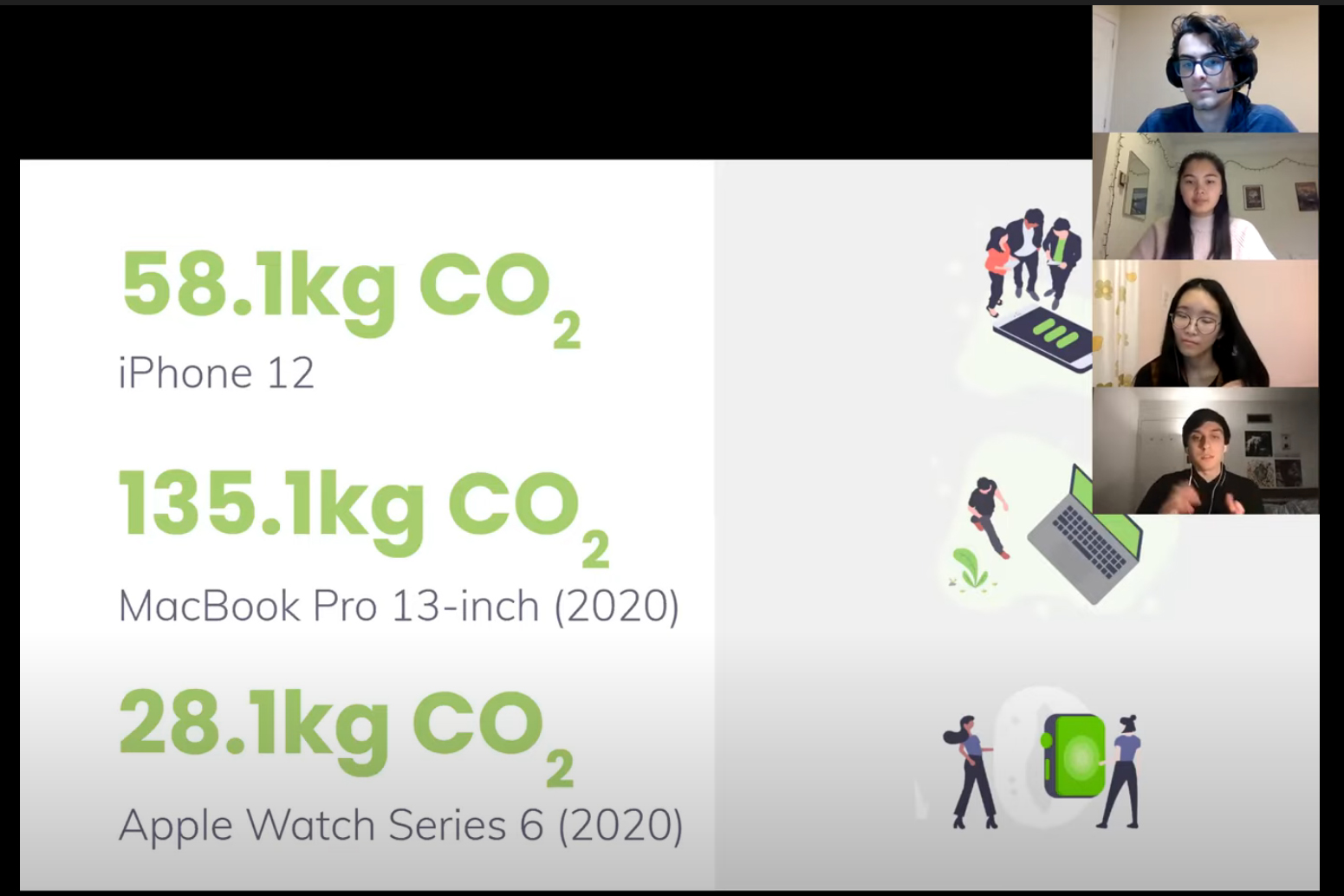From online classes to Netflix, it seems like we need technology more than ever. But our dependency on electronics extends beyond growing monthly subscription fees, and it might be time to reconsider what we’re paying for.
On January 28, the University of Toronto Environmental Action (UTEA) club held a webinar on how our devices affect the environment, and what we can do individually and collectively to help reduce our carbon footprint. The webinar included Miriam Diamond, a professor in the Department of Earth Sciences who researches the impacts of chemical pollutants.
Right off the bat, UTEA First-Year Representative Mai-Yin Johnston made one thing clear: we have a lot of devices. From televisions and laptops to smartphones and smartwatches — which are all considered information and communication technologies (ICT) devices — it’s no surprise that a quick poll of the room found most attendees have anywhere from five to 15 of these devices in their home.
A UTEA second-year representative, Aden Fisher, elaborated on the hidden costs of ICT devices. For example, he noted that the production process for thin silicon wafers for microchips requires purifying silicon from quartz, which expends 160 times more energy than producing more common industrial-grade silicon.
Shockingly, the greenhouse gases that go into producing a MacBook Pro are equivalent to the amount emitted by driving over 1,000 kilometres — the distance from Toronto to New Brunswick — in a Honda Civic.
“We often hear that… transportation is a huge contributor to climate change, that we should drive less and take public transport or bike or walk, but… you don’t often hear people telling you not to buy a new iPhone,” Fisher said.
What happens to e-waste?
There’s also the issue of electronic waste or e-waste, Fisher argued. Global industries produce an enormous amount of e-waste each year, much of which is not properly recycled. According to a 2019 United Nations report, the world is set to produce over 120 million tonnes of e-waste annually by 2050, and presently, only 20 per cent of ICT devices produced worldwide end up being sent to a facility that properly recycles them.
The other 80 per cent have a darker fate. According to Fischer, it may be sent to landfills or low-income countries that lack the health and safety regulations needed to protect workers from disassembling these devices.
The components are often burned to salvage material, which can lead to exposure to harmful chemicals like lead. These compounds can interfere with the body’s hormones, compromising the immune system and impairing childhood brain development. The chemicals may even affect larger communities if they contaminate groundwater.
These issues are close to home too. Primary research in Diamond’s lab found that some e-waste workers in Ontario are regularly exposed to flame retardants through dust ingestion and inhalation. While some are known to be toxic, many do not have occupational limits on how much workers can be exposed to them. Diamond emphasized that electronic recycling is an inefficient and dirty process, and that keeping devices for as long as possible is critical.
However, that can be a challenge because of planned obsolescence: the practice of designing products that will deliberately become unusable. In the tech world, that means software updates our older devices cannot manage, brand-specific hardware that is difficult to repair, and batteries that are not replaceable by the user.
Solutions big and small
That doesn’t mean we’re powerless, though. UTEA First-Year Representative Sam Lakerdas-Gayle mentioned the “Right to Repair” bill, which compels brands to offer the tools, parts, and repair manuals that consumers or electronic repair shops need to fix devices and prevent them from entering landfills.
The bill has passed in many European countries and is being considered in the US and Canada. Lakerdas-Gayle suggested companies like Fairphone — which builds phones from responsibly sourced materials that last longer and can be repaired — as alternatives to other other phone builders.
Nonetheless, Diamond emphasized that this issue must be solved at a societal level. She encouraged students to “engage with an organization like Environmental Defense,” noting that when campaigns become big and gain traction, politicians listen.
Ultimately, Diamond sums up that we need to understand the advantages and disadvantages of the process producing and recycling pieces of technology.
“Everything has unintended consequences,” Diamond said. “It’s a matter of us making wise choices, [and] using the technology for societal advantage and power rather than the technology using us to profit from.”
According to UTEA Co-President Grace Ma, the club has discovered the mobilizing potential of technology for itself over the past year. UTEA members are currently working with the Queen’s University environmental organization, Queen’s Backing Action on Climate Change, to develop a national virtual conference on environmental issues. The conference will aim to help clubs and organizations develop the skills and interdisciplinary knowledge they need to have a bigger impact.
The UTEA has also found new motivation to develop social infrastructure through Discord, allowing members to help sign up on projects of interest and keep the conversation going.


